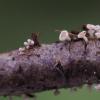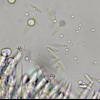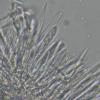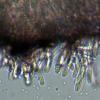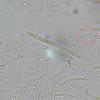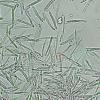
16-11-2025 21:09
 Robin Isaksson
Robin Isaksson
Anyone recognize this acc. to pictures.? Found on

14-11-2025 16:26
 Marian Jagers
Marian Jagers
Hello everyone, On dead wood of Cytisus scoparius

15-11-2025 23:22
Mario FilippaHello,this is what I think to be Hymenoscyphus mac

15-11-2025 20:25
 Riet van Oosten
Riet van Oosten
Hello, Found by Laurens van der Linde, Nov. 2025

14-11-2025 18:31
 Lothar Krieglsteiner
Lothar Krieglsteiner
Hello,can somebody provide me with a file of:Rothe

12-11-2025 09:25
 Viktorie Halasu
Viktorie Halasu
Hello, I need help with a pale terrestric Pseudom

11-11-2025 20:16
Bohan JiaHi, lastly I have found these tiny yellow decayin

09-11-2025 13:20
Hello.A tiny ascomycete, appearing as erupting gra
 Bonjour,
Bonjour, Je vous envoie ces images d'un échantillon de Lachnum, trouvé sur une brindille de Corylus, dans une forêt humide des Pyrenées catalanes.
Coupe 0,8-0,9 mm diamètre. Pied 0,5-0,6 mm d'haut.
Asques 34,8 – 40,8 x 5,1 – 5,5 µm.
Spores 7,7 – 10 x 1,5-2,7 µm.
Poils avec incrustations, légèrement élargis au sommet, 25,7-28,2 x 2,6-3,3 µm.
Paraphyses terminées en point, 53,7-53,9 x 3,7-3,9 µm.
Je pense en Lachnum crystallinum, mais je ne suis pas sûr du tout.
Merci d'avance pour votre aide,
Andrés

Hello Andres,
your Lachnum (s.str.) cannot be L. crystallinum (former Dasyscyphella crystallina) because of the hairs that are granulate to the top. Further, this species grows on Quercus only (?).
Which Lachnum you have found is difficult to say, because we for instance do not know if there are croziers at the base of the asci.
As I see, the paraphyses do not contain (many) vacuoles, and there are no crystals on the top of the hairs.
Best, Lothar


About the hairs, it's the length that I could measure, from the top of the hair to the most dense and colored part (I can't ruled out that they will continue in this part). I'm going to try to separate these hairs.
Andrés
